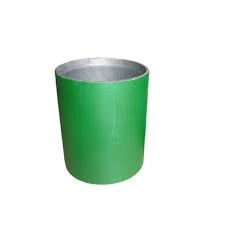- Afrikaans
- Albanian
- Amharic
- Arabic
- Armenian
- Azerbaijani
- Basque
- Belarusian
- Bengali
- Bosnian
- Bulgarian
- Catalan
- Cebuano
- Corsican
- Croatian
- Czech
- Danish
- Dutch
- English
- Esperanto
- Estonian
- Finnish
- French
- Frisian
- Galician
- Georgian
- German
- Greek
- Gujarati
- Haitian Creole
- hausa
- hawaiian
- Hebrew
- Hindi
- Miao
- Hungarian
- Icelandic
- igbo
- Indonesian
- irish
- Italian
- Japanese
- Javanese
- Kannada
- kazakh
- Khmer
- Rwandese
- Korean
- Kurdish
- Kyrgyz
- Lao
- Latin
- Latvian
- Lithuanian
- Luxembourgish
- Macedonian
- Malgashi
- Malay
- Malayalam
- Maltese
- Maori
- Marathi
- Mongolian
- Myanmar
- Nepali
- Norwegian
- Norwegian
- Occitan
- Pashto
- Persian
- Polish
- Portuguese
- Punjabi
- Romanian
- Russian
- Samoan
- Scottish Gaelic
- Serbian
- Sesotho
- Shona
- Sindhi
- Sinhala
- Slovak
- Slovenian
- Somali
- Spanish
- Sundanese
- Swahili
- Swedish
- Tagalog
- Tajik
- Tamil
- Tatar
- Telugu
- Thai
- Turkish
- Turkmen
- Ukrainian
- Urdu
- Uighur
- Uzbek
- Vietnamese
- Welsh
- Bantu
- Yiddish
- Yoruba
- Zulu
Key Distinctions Between Casing and Tubing in Oil and Gas Industry
Differences Between Casing and Tubing in Oil and Gas Drilling
In the oil and gas industry, the terms casing and tubing are fundamental in the context of well construction. Although both are essential components of a well, they serve distinct purposes and are manufactured differently. Understanding these differences is crucial for professionals in the industry, optimal well design, and ensuring safety during operations.
Differences Between Casing and Tubing in Oil and Gas Drilling
On the other hand, tubing is the pipe through which oil and gas are produced once the well is completed. It is installed within the casing and provides a path for the extracted hydrocarbons to flow to the surface. Tubing is typically smaller in diameter than casing and is constructed with thinner walls to accommodate the flow of fluids. Unlike casing, tubing is not cemented in place; instead, it can be removed and replaced as necessary during the life of the well. The design of tubing must consider factors such as pressure, temperature, and corrosion resistance, as it will be directly exposed to the produced fluids.
what are the differences between casing and tubing?

The installation process for both casing and tubing also differs. Casing is set in multiple sections as the well is drilled deeper, and each section is generally larger than the last. After cementing, the casing remains permanently in place to support the well structure. In contrast, tubing is typically installed once the well has been completed and is designed for easy access to facilitate maintenance and repairs.
Additionally, their respective roles in well integrity and production efficiency are significant. Casing ensures that the well does not collapse and isolates hydrocarbon formations, while tubing enhances production capabilities by providing a controlled path for fluid flow. Efficient tubing design and installation can reduce operational costs and enhance recovery rates.
In summary, casing and tubing are critical components of oil and gas wells, each serving unique purposes. Casing provides structural integrity and isolation, while tubing facilitates production. Understanding these differences is essential for effective well management and operational success in the oil and gas sector.
-
Tubing Pup Joints: Essential Components for Oil and Gas OperationsNewsJul.10,2025
-
Pup Joints: Essential Components for Reliable Drilling OperationsNewsJul.10,2025
-
Pipe Couplings: Connecting Your World EfficientlyNewsJul.10,2025
-
Mastering Oilfield Operations with Quality Tubing and CasingNewsJul.10,2025
-
High-Quality Casing Couplings for Every NeedNewsJul.10,2025
-
Boost Your Drilling Efficiency with Premium Crossover Tools & Seating NipplesNewsJul.10,2025







